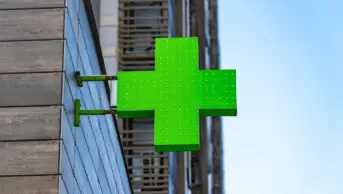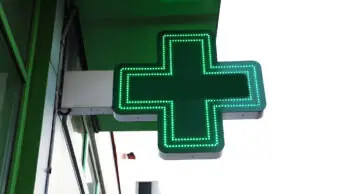
Shutterstock.com
A “small number” of pharmacies located within Boots retail stores will close in the coming months, the multiple has said.
In a statement to The Pharmaceutical Journal, issued on 4 November 2021, a spokesperson for Boots said the closures are part of an “ongoing review” of the multiple’s pharmacy provision.
This comes after Boots announced in June 2019 that it planned to close 200 stores by 2021, owing to “difficult market conditions”.
However, Boots confirmed that that the newly announced closures would only impact the pharmacy provision in affected stores, while the wider store will remain open to sell the company’s health and beauty items.
“At Boots, we aim to serve our customers however and wherever they need us, both in stores and online,” the spokesperson said.
“We continually review our pharmacy network to ensure that we balance our commitment to offer provision where it is most needed with our need to adapt to a changing market environment.
“Sometimes this means opening new pharmacies and sometimes it means taking a decision to close some. In the coming months we will close a small number as part of this ongoing review.”
They added that many of the Boots pharmacy counters facing closure “are close to other Boots stores that offer pharmacy provision, and we will offer pharmacy team members alternative roles at Boots wherever possible”.
“We have opened almost 20 new stores in 2020 and 2021 and continue to look at new locations that Boots stores can succeed,” they said.
On 14 October 2021, Walgreens Boots Alliance — the parent company of Boots UK — announced that pharmacy sales at Boots increased by 11.4% in June, July, and August 2021, compared with the same three months in 2020, “reflecting stronger demand for pharmacy services, notably COVID-19 tests”.
In a statement on its website, the Pharmacist Defence Association (PDA) union said that “a number of Boots pharmacists have been impacted” by the closures, with the PDA “supporting members with any consequences”.
It added that the PDA’s recognition agreement with Boots means the multiple is required to “inform the union of redundancy plans impacting less than 20 employees”.
“This arrangement means the union can proactively support any pharmacists impacted by such a change,” it said.
The PDA and Boots are currently engaged in pay negotiations for pharmacists at the multiple. In October 2021, the union warned of potential industrial action from Boots employees after they “overwhelmingly” rejected the multiple’s offer of a 2% increase in pay.
Why are so many pharmacies closing?
Community pharmacies in England are in the middle of a damaging five-year funding freeze, under their national contract with the NHS, which contrasts with rising investment in other parts of the health service.
This is leading to hundreds of branch closures, with the publication of official NHS data in October 2021 showing that England now has the lowest number of community pharmacies since 2015/2016.
A recent report commissioned by the National Pharmacy Association warned that more would follow if the current funding arrangements continue.
Government officials knew that under this funding freeze local pharmacies would close. Documents uncovered by The Pharmaceutical Journal in November 2020 revealed that the government was warned that the ‘Community Pharmacy Contractual Framework for 2019/20 to 2023/24’ could cause an increase in pharmacy closures because of cost pressures related to launching new services.
Yet, following negotiations for year three of the five-year contractual framework this year, the Pharmaceutical Services Negotiating Committee said it had received a “flat rejection” of additional funding for the sector from the Treasury.
READ MORE: Pharmacy ‘first ports of call’ are disappearing in struggling communities


